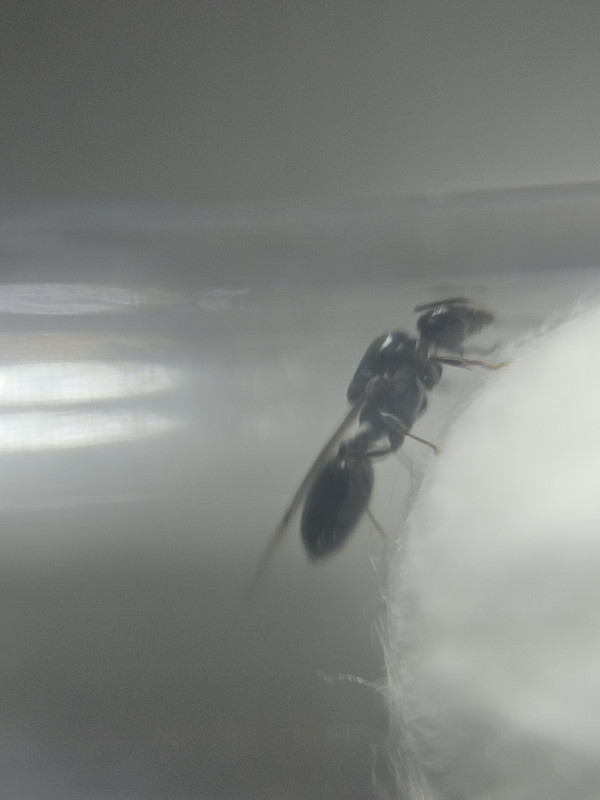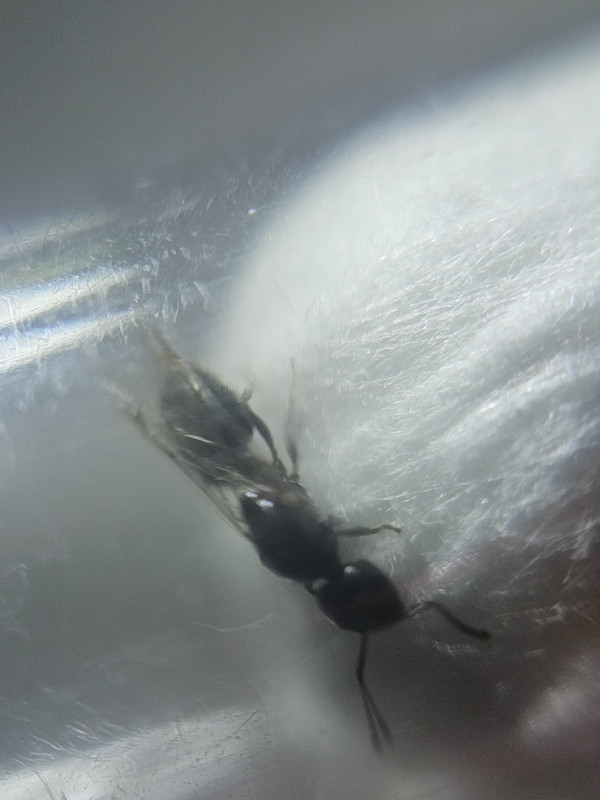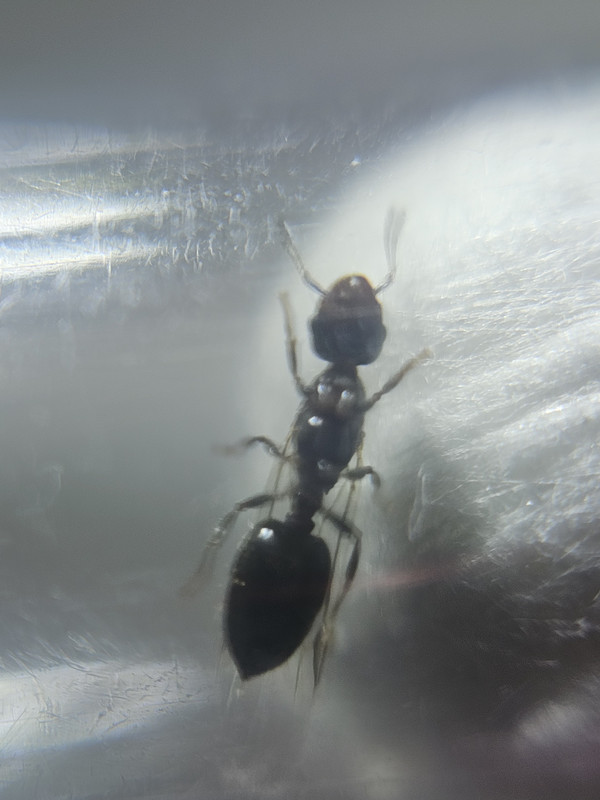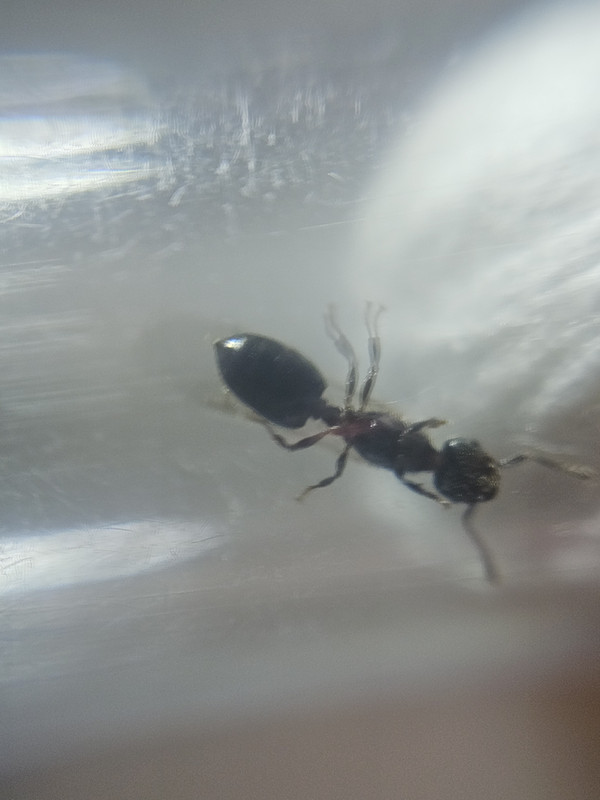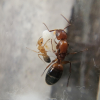1. Location (on a map) of collection: Pensacola, FL
2. Date of collection: 6/13/223
3. Habitat of collection: Blacklight
4. Length (from head to gaster): something like 6 or 7mm
5. Color, hue, pattern and texture: black color
6. Distinguishing characteristics: gaster shape
7. Distinguishing behavior: she does not stop moving, constantly running g around in tube so really hard to get good pics
8. Nest description: n/a
9. Nuptial flight time and date: 8:45 PM 6/13/2023
